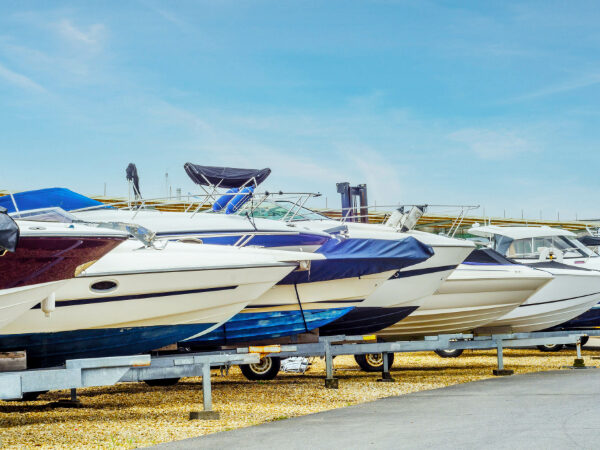
There’s nothing quite like a day out on the water. But every time you take that boat out, you’re going to have to bring it back in. Docking can be one of the most intimidating parts of boating, but it’s an essential skill for any boater and one that can be easily picked up with some practice. It also helps to have a clear method to follow, so let’s get into four easy steps you can use to dock any boat in any situation.
1. Reduce boat speed
This is the most obvious step, and always the first you should take. As a rule, you should never approach a dock any faster than you would be willing to collide with it.1 By planning for the possibility of an error, you can greatly mitigate any damage that error causes if it occurs. Choosing to slow things down is an excellent start. This ensures that you have time to position yourself correctly and change course if you encounter other boats. As you cut your speed, you’ll also want to prepare any dock lines (ropes you’ll use to tether the boat to the dock) and fenders (cushions that are hung from the side of the boat to soften impact) so you’re ready if you come upon the dock faster than expected.
Your game plan may change based on the kind of boat you’re docking. When considering how to dock a pontoon boat, for example, you’ll have to take the wind into greater account as you make your approach, since your vessel is more vulnerable to being blown off track by gusts.2
2. Set the boat to neutral
As you bring your speed down and draw closer to the dock, point your bow to the intended docking point and set your motor to neutral. Your momentum will continue to carry you forward to the dock. It’s important to consider the kind of dock you’re approaching when taking this step since you lose some maneuverability afterward. When considering how to dock a boat in a tight slip for example, it’s far more important to have your vessel lined up correctly before switching to neutral since you’ll be aiming for a more confined space with little room for error.
3. Bring the boat parallel to the dock
Most boats tie off on the sides in addition to the bow and stern, so bringing your boat parallel to the dock positions you to affix your dock lines and secure yourself to the dock. Aim to draw up next to whatever cleats, posts, or pilings your lines can be tied to.
The boat docking techniques you use can vary at this point of the process depending on what kind of boat you’re operating. For example, propeller motors will continue to be able to provide some level of steering power, even after set to neutral. This allows you to draw parallel later in your approach if necessary, although it’s always best to leave yourself as little positioning to do as possible, particularly with larger, heavier boats. Boats that run on jet propulsion, by contrast, have almost no steering power at all once set to neutral, and you should only do so once you’re certain you’ve positioned yourself correctly.
4. Secure the boat to the dock
Once you’ve drawn up parallel at the dock, you can finally go about securing your dock lines. When considering how to tie a boat to a dock, you should consider the options you have to affix your lines to. A docking area for boats will have some form of projections to tie off on such as cleats (small, metal t-shaped pieces on the sides of docks), which are ideal since they are easier to affix your lines to than other options like posts.3
At every step of taking your boat out, it’s always best to observe caution and take the necessary precautions to ensure you and your passengers’ safety. Take it slow and remain vigilant for other craft and any unexpected obstacles. It’s also always a good idea to be properly equipped for anything a day out on the water can throw at you, so keep your boat well-stocked with equipment such as flotation devices and navigation gear.
Even the perfect plan can go awry, of course, so insuring your boat is an absolute must to protect you against damage, injury liability, and more. Learn more about Boat Insurance from Nationwide, including the kinds of coverage we offer boaters, and which is right for you.
1https://www.discoverboating.com/resources/docking-a-boat-step-by-step-guide, Accessed June 2021
2https://www.discoverboating.com/resources/docking-a-boat-step-by-step-guide, Accessed June 2021
3https://www.discoverboating.com/resources/docking-a-boat-step-by-step-guide, Accessed June 2021
Disclaimer:
The information included is designed for informational purposes only. It is not legal, tax, financial or any other sort of advice, nor is it a substitute for such advice. The information may not apply to your specific situation. We have tried to make sure the information is accurate, but it could be outdated or even inaccurate in parts. It is the reader’s responsibility to comply with any applicable local, state, or federal regulations. Nationwide Mutual Insurance Company, its affiliates and their employees make no warranties about the information nor guarantee of results, and they assume no liability in connection with the information provided. Nationwide, Nationwide is on your side, and the Nationwide N and Eagle are services marks of Nationwide Mutual Insurance Company. © 2021 Nationwide.



